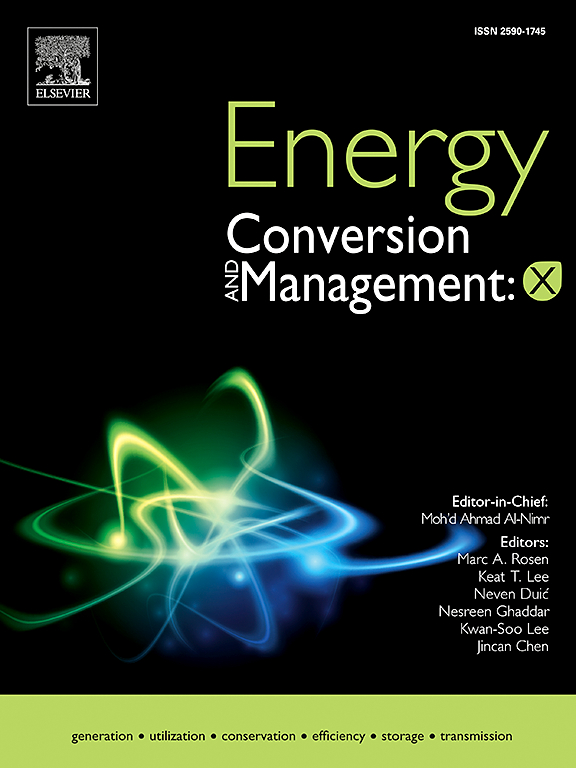Syngas/hydrogen production from self-supporting corncob sacrificial anode-assisted water electrolysis: Aspen Plus simulation and experimental study
IF 9.9
1区 工程技术
Q1 ENERGY & FUELS
引用次数: 0
Abstract
Carbon-assisted water electrolysis (CAEW), leveraging the carbon oxidation reaction (COR) in place of the oxygen evolution reaction (OER), substantially reduces the energy demand for H2 production. However, CO2 is the primary anode product in conventional CAEW, limiting its practical value. Additionally, mass transfer constraints significantly impact the efficiency of COR in substituting for OER in traditional CAEW systems. This study proposes an advanced CAEW process for syngas production, utilizing Aspen Plus simulations to generate H2 at the cathode and CO at the anode. A self-supporting corncob biomass char sacrificial anode was synthesized via hydrothermal-molding-pyrolysis. Simulation outcomes demonstrate that energy consumption for syngas production decreases as the H2/CO ratio increases within the 1 to 5 range, reaching minimum values of 1.14 kWh/m3-H2 and 1.45 kWh/m3-syngas theoretically at an H2/CO ratio of 3. Electrochemical testing reveals that the corncob biomass char anode operates at a potential approximately 1/3 lower than that of a Pt anode while maintaining cathodic H2 production efficiency. The corncob sacrificial anode produces reduced gas and O2, confirming the replacement of OER by COR. Additionally, the anode gas contains around 10 % CO, validating CAEW’s feasibility for syngas production.

求助全文
约1分钟内获得全文
求助全文
来源期刊

Energy Conversion and Management
工程技术-力学
CiteScore
19.00
自引率
11.50%
发文量
1304
审稿时长
17 days
期刊介绍:
The journal Energy Conversion and Management provides a forum for publishing original contributions and comprehensive technical review articles of interdisciplinary and original research on all important energy topics.
The topics considered include energy generation, utilization, conversion, storage, transmission, conservation, management and sustainability. These topics typically involve various types of energy such as mechanical, thermal, nuclear, chemical, electromagnetic, magnetic and electric. These energy types cover all known energy resources, including renewable resources (e.g., solar, bio, hydro, wind, geothermal and ocean energy), fossil fuels and nuclear resources.
 求助内容:
求助内容: 应助结果提醒方式:
应助结果提醒方式:


